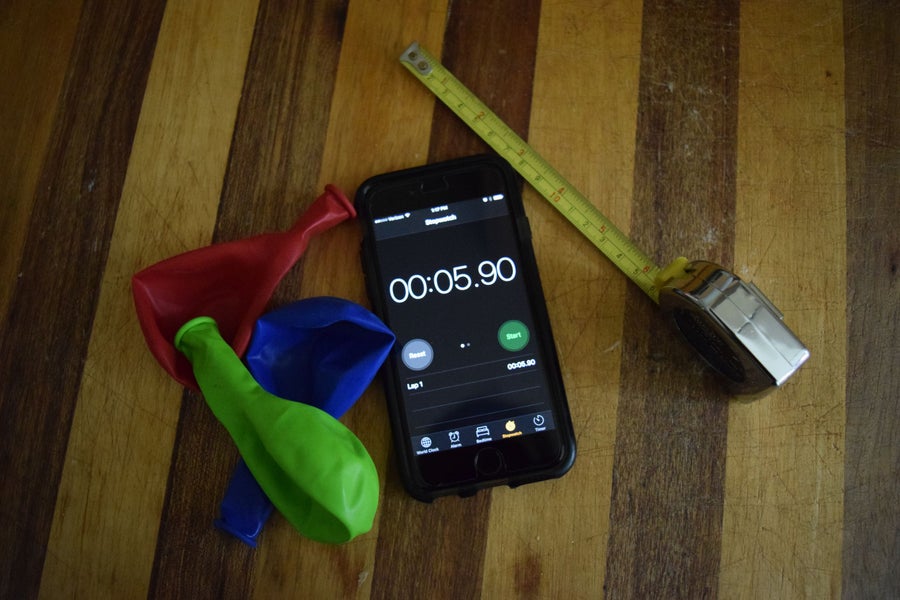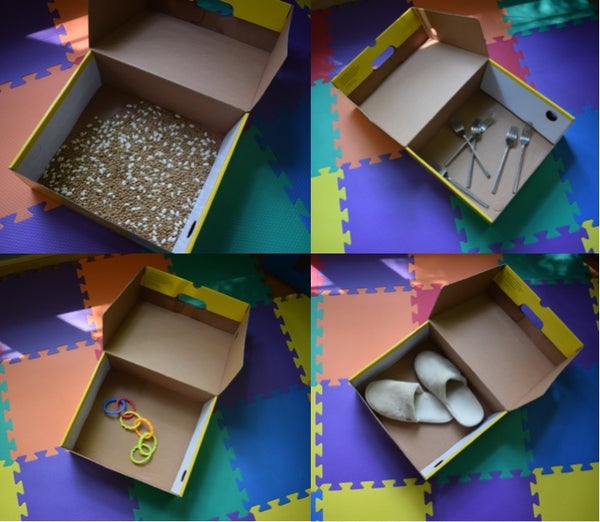This article was published in Scientific American’s former blog network and reflects the views of the author, not necessarily those of Scientific American
Whether it is for a family reunion, holiday picnic, birthday party, or just a nice Tuesday evening, the warm weather and waning summer sunsets tend to bring people out of their homes and into each other’s company. These gatherings might have your local favorites – like bocce, cornhole, croquet, washers, or volleyball – but what about bringing a little problem-solving to your fun festivities?
Team up with the young (or young at heart) and see what unique solutions you can come up with. The ingenuity of your 7-year-old cousin may surprise you!
Mystery Boxes
On supporting science journalism
If you're enjoying this article, consider supporting our award-winning journalism by subscribing. By purchasing a subscription you are helping to ensure the future of impactful stories about the discoveries and ideas shaping our world today.
Teams try to guess the contents of a series of shoe boxes without being able to look inside.
Supplies:
5-10 shoe boxes
Tape
A variety of objects to put in shoe boxes (Ideas: Balloon filled with sand, a deck of cards, 10 green army men, 5 pairs of rolled socks, a small stuffed animal, a tennis ball, 5 pens, 20 paper clips, bottle caps, an empty soda can, etc)
Notepad and pencil for each team
How to Play:
Fill each box with one (or one type of) item and tape the box shut.
Split the group into teams of 2-4 and spread the boxes spread out at numbered stations on tables or around the yard.
At each station, teams will have 1-2 minutes to come up with their best guess for what is inside the box. They can shake, tip, drop, twist, listen, smell, or whatever else they can think of – except look inside the box!
When the timer goes off, the team writes down their best guess and moves on to the next station.
Once all of the teams have visited each station, gather everyone together and have teams read off their guess to the group before opening each box. The team with the most correct answers wins!
Tip: Try to pick objects with a range of qualities: weight, shape, number, smell, etc
.JPG?w=900)
Credit: Amanda Baker
Deep Space Rescue
Two teams have to work together to save a group of astronauts before they run out of power. Ground control knows how to build the piece they need, but they can only communicate with the astronauts through their radio (think Apollo 13). The astronauts need to build the new part from the pieces in their ship before they run out of time!
Supplies:
Space Shuttle (Can be anything that keeps the astronauts close together: tent, taped off area in grass, small porch, etc)
Ground Control (Location out of sight from the space shuttle)
Communication System (Walkie-talkies or phones with cameras turned off)
Ship part that will save the day – one built and one in pieces (Structure built out whatever supplies you have two copies of: legos, k’nex, toilet paper tubes, rubber bands, tape, plastic bags, scissors, twist ties, twine, magnets, etc)
Timer
How to Play:
Before the game, the host should build the all-important part that the astronauts need and keep it hidden. They should also assemble all of the same pieces – but not constructed – in another kit for the astronauts.
Set up the space shuttle and ground control locations.
Break the group into two teams of 2-3 (larger teams may make this difficult or leave people out) and name one group the astronauts and the other ground control.
Send the astronauts to the space shuttle to look at/organize their kit of parts, and give ground control the assembled part. Provide each team with one walkie-talkie or phone.
Set a timer and tell the teams to begin.
Ground control will explain to the astronauts how to build the part through the walkie-talkie, without being able to send pictures or see the other team. As time progresses, the host can count down or say things like “Five minutes until we lose power!” Make sure that the astronauts stay within the confines of the “ship.”
Once the time runs out, compare the part that the astronauts built with the original, and see whether the mission was saved!
Tips: The skill level to build the part and the length of the game will depend on the age of the participants. For bigger groups, have multiple sets of ground control and astronauts working at the same time.

Credit: Amanda Baker
Build a Timer
Teams compete to build and calibrate the most accurate timer out of the supplies given.
Supplies:
Enough of the “timer” supplies for each team (ideas: balloon, plastic cups and sand, length of track and a matchbox car, etc)
Supplemental supplies for construction and measurement (string, markers, a ruler, tape, etc)
One stopwatch per team (or phone with stopwatch capabilities)
Pencil and paper for each team to sketch designs
How to Play:
Divide identical sets of supplies into kits for each team, including a stopwatch.
Each team uses the supplies given to design a timer.
Teams build their timers and calibrate them (perhaps fill a balloon to different sizes and time how long it takes for the air to come out, tie off a balloon filled with air and drop it from a variety of heights and time how long it takes to hit the ground, time how long it takes the car to go down a track held at different angles, time how long it takes for different levels of sand to come through a hole in a cup, etc).
Once teams are done with their calibrations, the host takes away the team stopwatches.
The host has each team try to time 0.5, 1, 3, and 5 seconds using their timers and uses a stop watch to see how long each one actually lasted.
The team with the times closest to the target times wins!
Tips: Depending on the age group, the teams can try to come up with ways to time longer periods.
